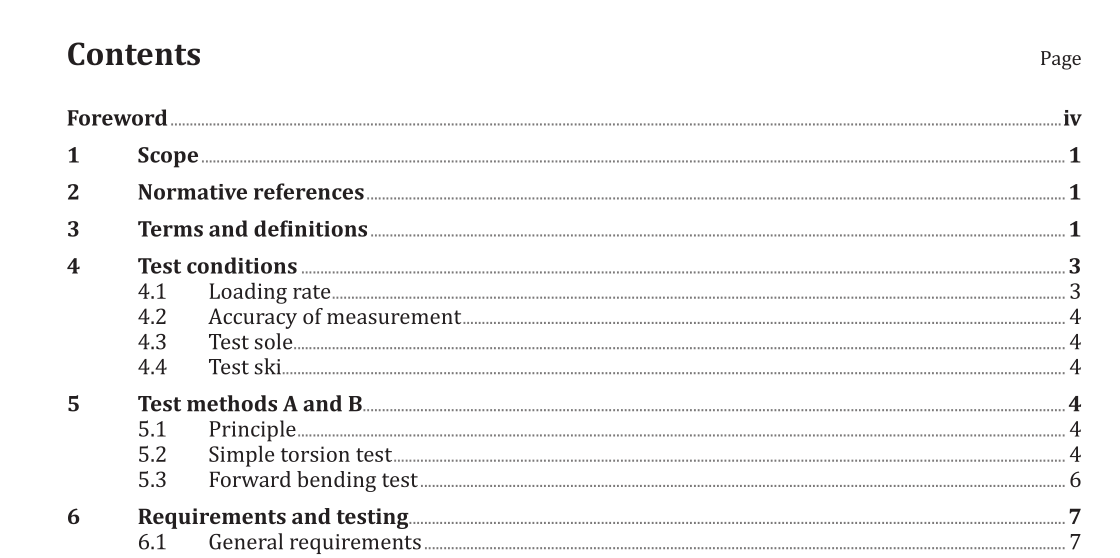ISO 9462:2014 pdf download.Alpine ski-bindings — Requirements and test methods
1 Scope
This International Standard specifies the main characteristics of ski-bindings and describes, as an example, the test methods A and B.
This International Standard applies to ski-bindings for alpine skiing for children, juniors, and adults.
2 Normative references
The following documents, in whole or in part, are normatively referenced in this document and are indispensable for its application. For dated references, only the edition cited applies. For undated references, the latest edition of the referenced document (including any amendments) applies.
ISO 5355, Alpine ski-boots — Requirements and test methods
ISO 8061, Alpine ski-bindings — Selection of release torque values
ISO 9465, Alpine ski-bindings — Lateral release under impact loading — Test method
ISO 9838, Alpine and touring ski-bindings — Test soles for ski-binding tests
ISO 11087, Alpine ski-bindings — Retention devices — Requirements and test methods
3 Terms and definitions
For the purposes of this document, the following terms and definitions apply.
3.1 alpine ski-binding
system to ensure firm connection between boot and ski, fixing the heel low for downhill skiing
Note 1 to entry: The system releases the boot from the ski when certain loads reach preset values.
3.2 release
detachment of the boot from the ski by release of the mechanism that ensures the connection between boot and ski
Note 1 to entry: This release is only considered effective when all the loads due to the boot/ski connection have dropped to values which present no danger to the skier.
3.3 release values
maximum values of torques M z and M y caused at the boot/ski connection by the two movements of torsion and forward bending
Note 1 to entry: For the torques M z and M y , see Figure 1.
Note 2 to entry: These values are generally adjustable on current bindings which have a scale and an indicator displaying the setting level.
Note 3 to entry: In the present state of the art, bindings are designed at least to release in torsion (±M z ) and in forward bending (±M y ).
4.2 Accuracy of measurement
The measurement error of the release value in torsion shall be smaller than ±2 % for values above 50 Nm inclusive and ±1 Nm for values below 50 Nm. The measurement error of the release value in forward bending shall be smaller than ±2 % for values above 200 Nm inclusive and ±4 Nm for values below 200 Nm. The test equipment shall be designed to allow application of pure moments without any extraneous forces during the entire release process.
4.3 Test sole
The test sole shall be in accordance with ISO 9838. If a boot-binding system requires a specific boot-sole design, a test sole should be cut from a boot provided by the manufacturer and adapted for test needs. The test sole shall be degreased, washed, and dried before testing.
ISO 9462:2014 pdf download
